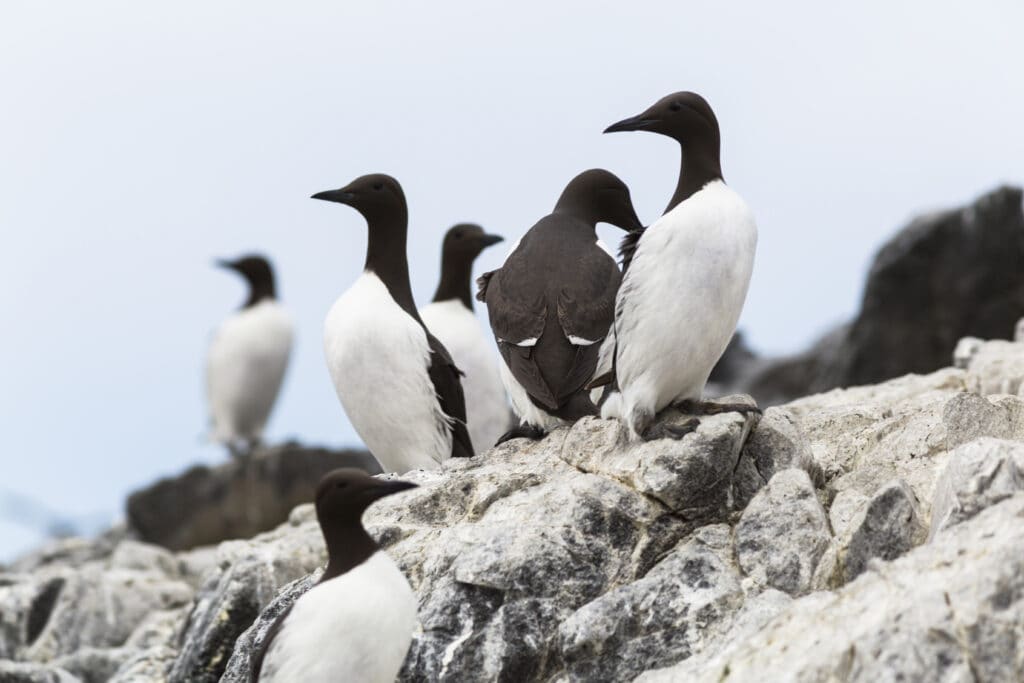Guillemots and Murres may not look like Puffins at a glance, but all three of these seabirds belong to the Auk family tree. If you’re new to the Auk family, you might be surprised to learn that Puffins are not, in fact, a close relative to penguins. Instead, Auks, Guillemots, Murres, and Puffins make up there own special seabird family. One key difference between this family and Auks — these birds can fly! With all that is unique and interesting about the Guillemot and its relatives, it is not hard to see why conservationists are interested in protecting these charming birds.
Related Article: Illegal Shooting a More Likely Cause For Bird Deaths Around Power Lines Than Electrocution
On the Skomer Island, located just off the southern coast of Wales, these protections have begun to pay off. Skomer Island was once home to a colony of over 100,000 Common Guillemots (Common Guillemot and Common Murre are used interchangeably, but we’ll stick with calling them Guillemots here). In 1930, these numbers began to sink and by the end of World War II, the colony had shrunk by as much as 95%. Skomer Island’s Guillemots were in trouble. The main cause of this decline was constant and pervasive oil pollution.
In the 1970s, about 90% of Guillemot cadavers found dead in the Skomer Island area were found to be contaminated with oil. In the 1980s, however, conservation efforts began to really take off. From a meager population 0f 2,000 birds in 1972, the colony has recovered to 30,000 individuals. And what’s more, oil pollution is now found in just 10% of recovered Guillemot cadavers.
Recovery has been agonizingly slow, but evidently very rewarding. Despite making great strides, however, Skomer Island’s Guillemots still face dangers, some of which we are just beginning to understand. Recent findings suggest that, likely due to climate change, the timing of Guillemot breeding on Skomer Island has changed by as much as two weeks. Warmer temperatures gradually force birds to breed earlier in the season. The consequences of this change are a big unknown. Other new threats include increasingly frequent harsh winters, unseasonal storms, avian influenza, and changes in food supply.
The Guillemots of Skomer Island are poised to make an incredible comeback. The reduction of oil pollution in the waters off the coasts of Wales gave them enough of a reprieve that they were able to gradually rebuild their delicate population, growing in size by 15 times over the course of the last 50 years. Only time will tell if this current population is resilient enough to weather the changes brought on by the warming climate.
Popular Article: Success of Albatross Colony in Hawaii Owed to Decades of Protection

